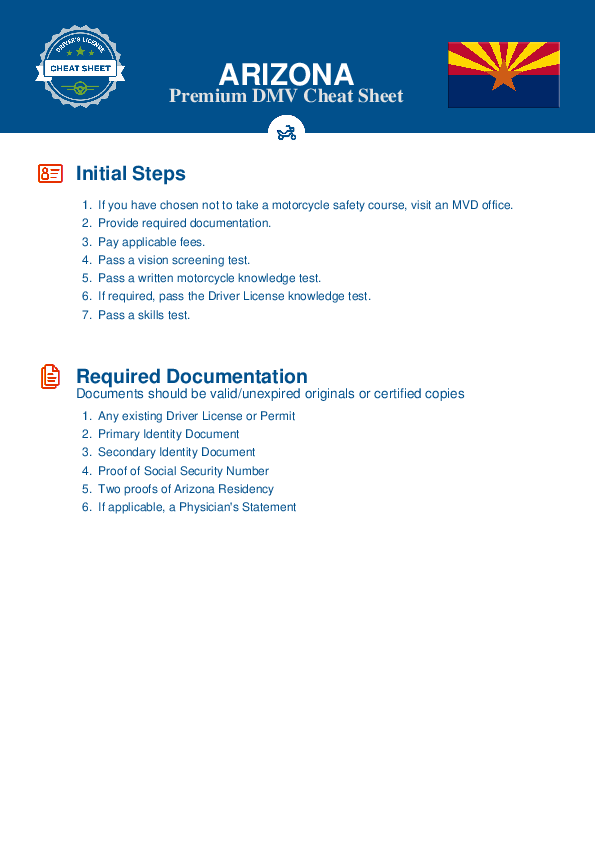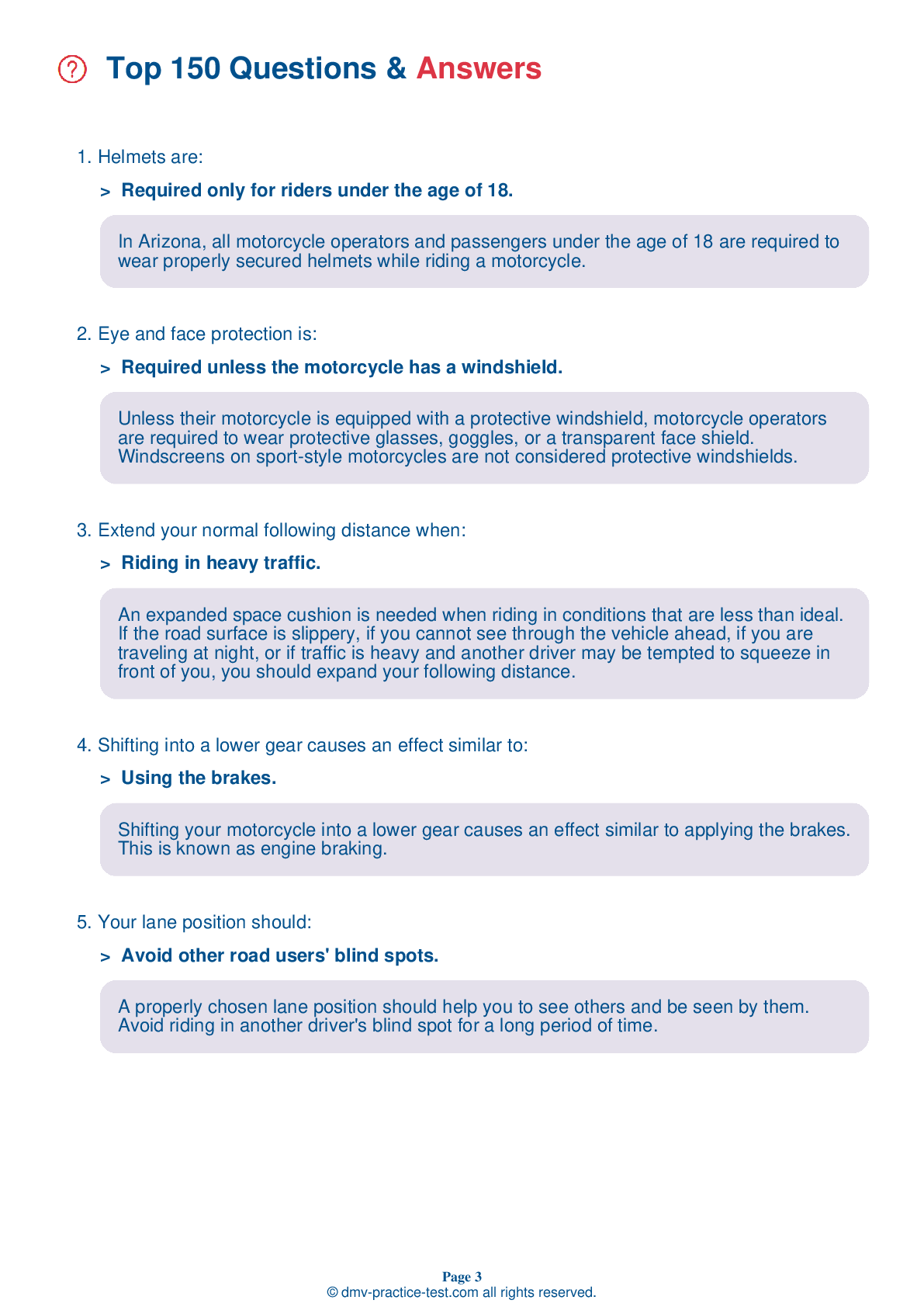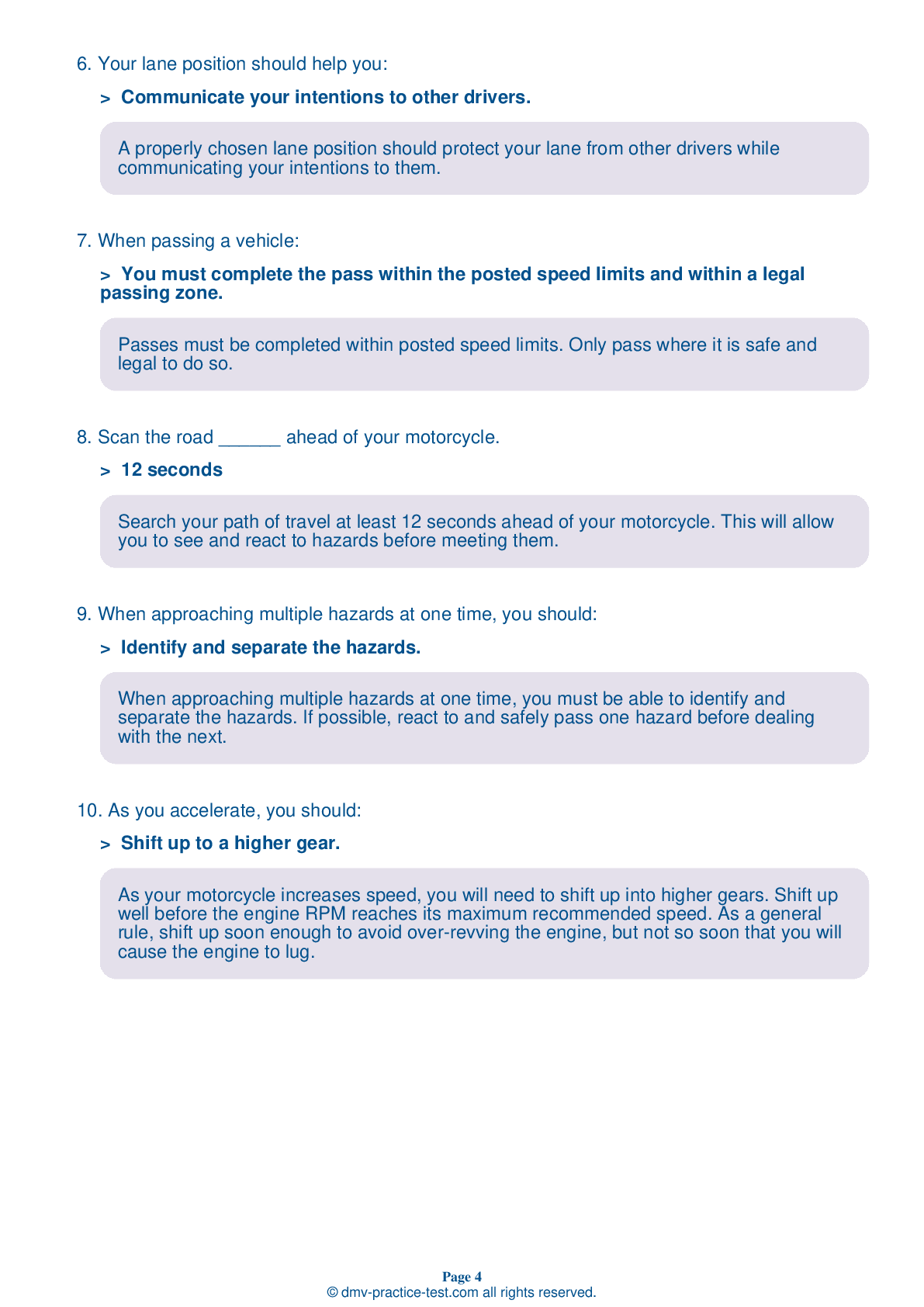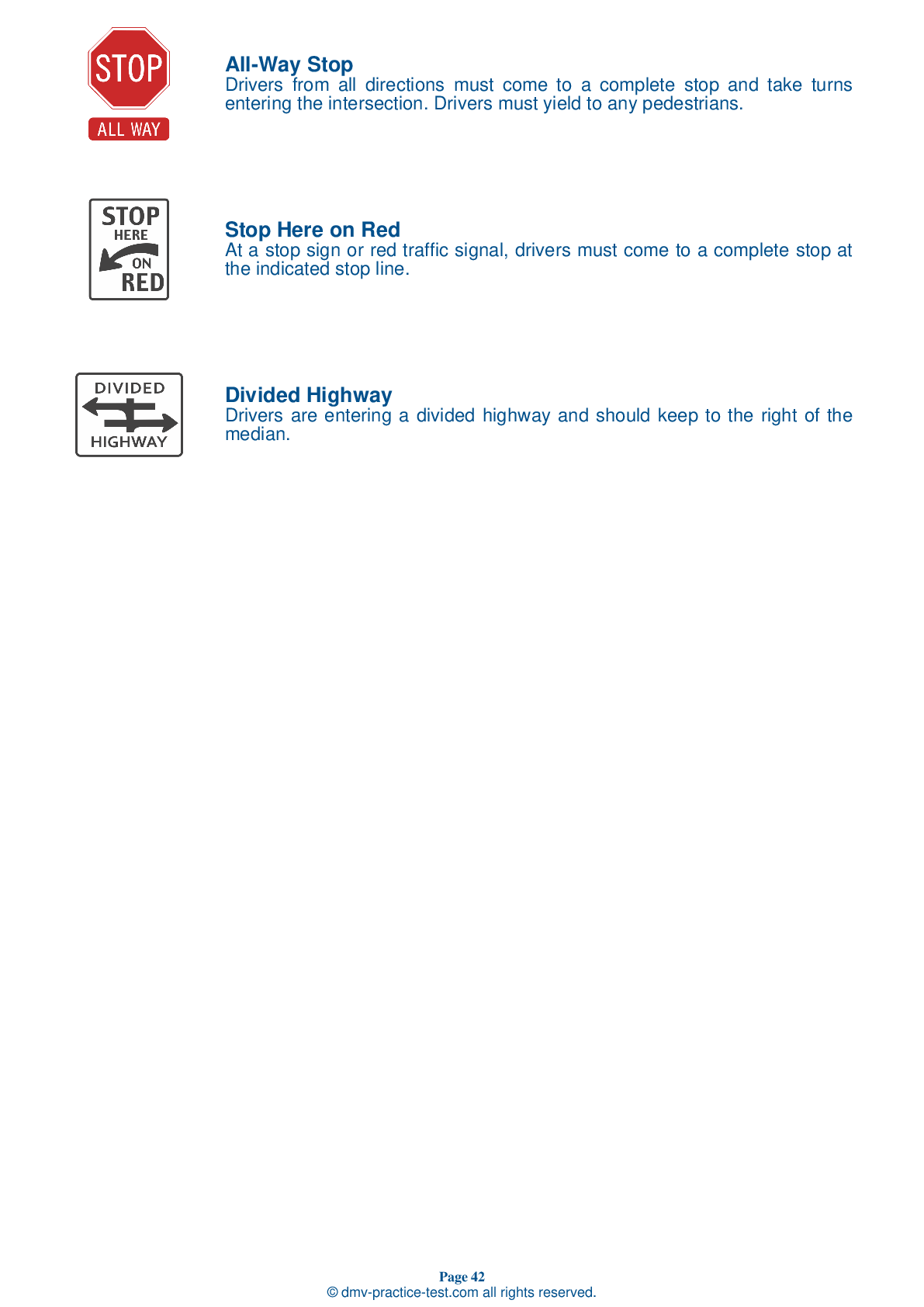Motorcycle Test | License AZ 2025 | FREE Online Practice! #13
Take this FREE motorcycle test (license in AZ 2025) to check your knowledge of the road rules. To improve your results, download a motorcycle handbook online, study theory, and practice for free on our website. Still worried about how to get a motorcycle license in Arizona in 2025? Check our website for more sample tests, train as much as possible, and boost your grades!
1 . When riding, you should:
When riding, always look well ahead of your vehicle to help you anticipate potential hazards. Doing this will help you react to hazards before meeting them.
2 . If you began a curve on the outside and no traffic is present when you are exiting the curve, you should move:
If no traffic is present when you are taking a curve, start on the outside of the curve to increase your line of sight and the effective radius of the turn. As you turn, move toward the inside of the curve. As you pass the center of the curve and prepare to exit, move back toward the outside position. Remain aware of changing road and traffic conditions and adjust as necessary.
3 . This road sign means:
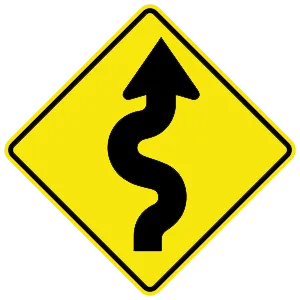
This sign indicates that the road ahead winds with a series of turns or curves.
4 . The best way to stop quickly is to:
To stop quickly, apply both brakes at the same time. Apply the brakes firmly and do not panic if the brakes lock.
5 . To steer a three-wheeled motorcycle, you should:
Three-wheeled motorcycles and two-wheeled motorcycles steer differently. Since three-wheeled vehicles cannot lean, the front wheel needs to be pointed in the direction you want the vehicle to go.
6 . When preparing to pass another vehicle on the left, you should:
When passing another vehicle on the left, you should ride in the left portion of your lane. Signal your intentions and check for traffic. Pass when it is safe to do so, then signal and return to your original lane when traffic allows.
7 . When approaching multiple hazards at one time, you should:
When approaching multiple hazards at one time, you must be able to identify and separate the hazards. If possible, react to and safely pass one hazard before dealing with the next.
8 . Before mounting your motorcycle, perform all of the following checks, except:
Before riding, you should check the pressure and condition of your tires; check the oil and fluid levels; and make sure that the low beam headlight, high beam headlight, taillight, signal lights, and brake light all work properly.
See the exact questions that will be on the 2025 Arizona DMV exam.
99.2% of people who use the cheat sheet pass the FIRST TIME
Jeneen was tired of paying $5/gallon. She got herself a scooter that required the motorcycle license. She studyed the motorcycle test cheat sheet and passed her test the next day!
Christopher tells us how he knew nothing prior to obtaining the motorcycle study guide, and he only got one question wrong because he clicked on the wrong answer by mistake.
